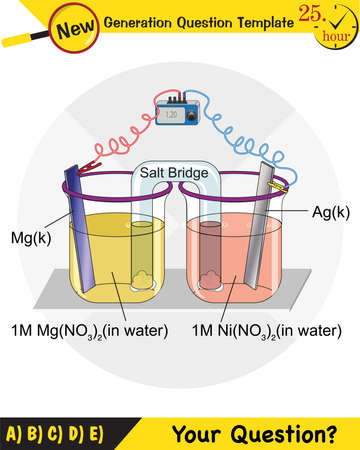What Is Transmission Fluid and What Does It Do?
When it comes to keeping your car running smoothly, transmission fluid is one of those unsung heroes that deserves a little more attention. Simply put, transmission fluid is a specialized lubricant designed specifically for your vehicle’s transmission system—whether you drive an automatic or a manual. Its main job is to ensure all the moving parts inside your transmission work together seamlessly, reducing friction and wear. For automatic transmissions, this fluid also acts as a coolant and helps transmit power from the engine to the wheels. In manual transmissions, it primarily lubricates the gears and prevents them from grinding against each other. Without fresh, high-quality transmission fluid, your car could face problems like rough shifting, overheating, or even complete transmission failure. That’s why understanding what transmission fluid does—and making sure it’s maintained properly—is essential for any American driver who wants their vehicle to last and perform at its best.
2. Signs That Your Transmission Fluid Needs Attention
Recognizing the early warning signs of transmission fluid trouble can save you a lot of money and hassle down the road. Transmission fluid plays a crucial role in keeping your car’s transmission running smoothly, so when it starts to go bad or gets low, your vehicle will let you know in several ways. Here are some of the most common symptoms that indicate your transmission fluid may need to be checked or replaced:
| Symptom | What It Means | Why You Shouldn’t Ignore It |
|---|---|---|
| Slipping Gears | Your car unexpectedly changes gears or struggles to stay in gear. | This could lead to unsafe driving conditions and signal low or deteriorated fluid. |
| Rough or Delayed Shifting | Shifting between gears feels jerky, delayed, or clunky. | This is often a sign of dirty, old, or low transmission fluid affecting performance. |
| Strange Noises | You hear grinding, whining, or clunking from under the hood while driving. | Noises may point to inadequate lubrication from old or insufficient fluid. |
| Burnt Smell | A sharp, burnt odor coming from your engine bay. | This could mean your transmission is overheating due to worn-out fluid. |
| Fluid Leaks | Puddles of reddish fluid under your car after parking. | Leaking transmission fluid will eventually lead to bigger mechanical problems if ignored. |
If you notice any of these symptoms, don’t wait—address them as soon as possible. Ignoring these warning signs can turn a simple maintenance issue into a costly repair job. Checking your transmission fluid regularly and being aware of these common symptoms will help keep your ride smooth and safe on American roads.

3. How to Check Your Transmission Fluid
Checking your transmission fluid at home is easier than you might think, and it’s a simple way to keep your vehicle running smoothly. Here’s a step-by-step guide to help you safely inspect both the level and quality of your transmission fluid—no advanced tools required.
Step 1: Park Safely
First, make sure your car is parked on a flat surface. Engage the parking brake, and for most vehicles, let the engine run until it reaches normal operating temperature. Always check your owner’s manual for any model-specific instructions.
Step 2: Locate the Dipstick
Pop the hood and look for the transmission dipstick—usually labeled and located near the engine (not to be confused with the oil dipstick). If you drive a newer vehicle with a sealed transmission system, professional service may be required.
Step 3: Remove and Clean the Dipstick
With the engine still idling (unless your manual says otherwise), pull out the dipstick. Wipe it clean with a lint-free cloth or paper towel to remove old fluid residue.
Step 4: Check Fluid Level
Reinsert the dipstick fully, then pull it out again to check the fluid level. The stick will have “Full” and “Add” marks—your fluid should fall within this range. If it’s low, you may need to top off or investigate for leaks.
What to Look for: Color, Consistency & Odor
- Color: Healthy transmission fluid is typically bright red or pinkish. Dark brown or black fluid signals it’s time for a change.
- Consistency: Fresh fluid should be smooth and almost oily. Gritty or sludgy texture means contamination or excessive wear.
- Odor: Good fluid smells slightly sweet or neutral. A burnt smell is a major warning sign that something isn’t right.
Pro Tip:
If anything looks or smells off, don’t ignore it! Catching problems early can save you from costly repairs down the road. Regularly checking your transmission fluid only takes a few minutes but pays off big in long-term vehicle health.
4. Transmission Fluid Maintenance: How Often Should You Change It?
When it comes to keeping your vehicle running smoothly, regular transmission fluid maintenance is a must. But how often should you actually change your transmission fluid? The answer depends on several factors, including your vehicles make and model, how you drive, and the type of transmission you have.
Recommended Service Intervals
Most car manufacturers recommend changing the transmission fluid every 30,000 to 60,000 miles for automatic transmissions. Some newer vehicles with advanced synthetic fluids may stretch that interval up to 100,000 miles. For manual transmissions, the recommended interval can be anywhere from 30,000 to 60,000 miles. However, always check your owner’s manual for the manufacturer’s specific guidelines.
How Driving Conditions Affect Fluid Change Frequency
Your driving habits and environment play a big role in how often you should change your transmission fluid. If you regularly tow heavy loads, drive in stop-and-go traffic, or travel through extreme heat or cold, you might need to service your transmission more frequently than someone with lighter driving habits.
| Driving Condition | Suggested Change Interval |
|---|---|
| Normal commuting/highway driving | Every 60,000 miles |
| Towing or hauling heavy loads | Every 30,000 miles |
| Extreme temperatures (hot/cold) | Every 30,000-45,000 miles |
| Frequent short trips/stop-and-go traffic | Every 30,000-45,000 miles |
Where to Find the Right Information
The best place to start is your vehicle’s owner’s manual—this will give you the exact recommendations for your make and model. You can also check with your local dealership or a trusted mechanic for advice tailored to your specific situation. If you’ve misplaced your manual, most automakers provide digital versions on their official websites.
5. Choosing the Right Transmission Fluid for Your Car
Picking the correct transmission fluid is more than just grabbing a bottle off the shelf—its a critical decision that keeps your car running smoothly and protects your investment. When shopping for transmission fluid, you’ll generally find two main types: conventional (mineral-based) and synthetic. Synthetic fluids are engineered to handle higher temperatures and offer better protection, making them ideal for newer vehicles or cars that experience heavy use. Conventional fluids can be suitable for older models or those specifically designed for them, but always check your owner’s manual for manufacturer recommendations.
It’s also essential to make sure the fluid you pick is compatible with your vehicle’s specific transmission system. Automatic transmissions, continuously variable transmissions (CVT), and dual-clutch systems each require unique formulations. Using a fluid that isn’t designed for your transmission can lead to poor shifting, increased wear, or even complete transmission failure over time.
Why does this matter? Using the wrong type of transmission fluid can void warranties, reduce fuel efficiency, cause overheating, and potentially damage expensive internal components. Always double-check the label for specifications like Dexron, Mercon, ATF+4, or others as outlined in your manual.
If you’re unsure which fluid to choose, don’t hesitate to ask your local mechanic or auto parts store expert—they deal with these questions daily and can steer you in the right direction. Remember: a little attention now saves big headaches later!
6. DIY vs. Professional Service: Which Is Better?
If youre considering a transmission fluid change, you might be weighing whether to tackle the job yourself or trust a professional shop. Both options have their own set of advantages and drawbacks, and the best choice depends on your situation. Lets break down the pros and cons based on time, cost, and skill level.
DIY Transmission Fluid Change
Pros:
- Cost Savings: Doing it yourself can save you money on labor, which is often the most expensive part of any service at a shop.
- Learning Experience: If youre hands-on, this can be a rewarding way to get to know your vehicle better.
- Convenience: You can do it on your own schedule without waiting for an appointment.
Cons:
- Skill Level Required: Transmission fluid changes can be messy and require some mechanical know-how. If you’re not comfortable working under your car or don’t have the right tools, it can get tricky fast.
- Time Commitment: A DIY job may take a couple of hours, especially if it’s your first time.
- Potential Mistakes: Using the wrong fluid or missing a step could lead to bigger (and more expensive) problems down the road.
Professional Transmission Fluid Service
Pros:
- Expertise: Trained technicians know exactly what theyre doing, reducing the risk of mistakes.
- Saves Time: Most shops can handle a fluid change quickly while you relax in the waiting room or run errands.
- Additional Inspection: Pros will often spot other issues during service, giving you peace of mind about your transmissions overall health.
Cons:
- Higher Cost: Labor charges and shop fees make this option pricier than DIY.
- Lack of Control: You’re trusting someone else with your vehicle and their schedule may not always align with yours.
The Bottom Line
If you’re comfortable with basic car maintenance and want to save some cash, DIY might be the way to go—just be sure to follow all instructions carefully. For most drivers, though, letting a trusted shop handle it means less hassle and greater confidence that the job’s done right. Whatever you choose, keeping up with transmission fluid changes is key to keeping your ride running smooth.
7. Pro Tips for Keeping Your Transmission Healthy
Now that you know the basics of transmission fluid and why it matters, let’s wrap things up with some practical tips to help your transmission last longer. A little extra attention can make a world of difference, saving you money and headaches down the road.
Stay on Top of Regular Checks
Don’t wait for a problem before checking your transmission fluid. Make it a habit to pop the hood once a month and inspect both the fluid level and its color. If your vehicle has a dipstick, use it—if not, refer to your owner’s manual for proper checking procedures. Catching issues early can prevent major repairs later.
Drive Mindfully
Your driving habits have a huge impact on transmission health. Avoid aggressive starts, hard stops, and rapid gear shifts. Give your car a few minutes to warm up in cold weather before hitting the road—this helps the fluid circulate properly. Also, if you tow heavy loads or drive in stop-and-go traffic often, consider more frequent fluid checks or changes.
Watch for Leaks
Transmission fluid leaks are more common than you might think. Look for reddish or brownish spots under your car where you park. Even small leaks can lead to big problems if left unchecked, so address them ASAP by consulting a trusted mechanic.
Bonus Tip: Listen to Your Car
If you notice unusual noises, delayed shifting, or slipping gears, don’t ignore these warning signs. Your transmission is trying to tell you something! Early intervention can save you from a costly breakdown.
The Bottom Line
A healthy transmission keeps your ride smooth and reliable. With regular fluid checks, smart driving habits, and a close eye on potential leaks, you’ll keep your car running strong for years to come. Remember: when it comes to transmissions, an ounce of prevention is worth a pound of cure!

